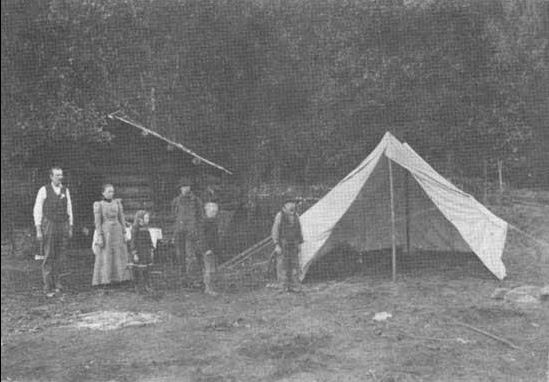UPDATE: Matthew pointed out in a comment that Garrity was referring to the Forest Service as a whole, not Region 1. Now whether the no-bids of the entire US, from Alaska to National Forests of Florida is relevant to the discussion of what is going on in Montana, is up to each reader to decide for hizzerself. BUT if you are interested in Region 1’s no-bid, here it is, plus some additional explanation from Region 1.
2016 Outlier Explanation: 42 million board feet of the volume is attributed to one sale that went no bid twice (so it counted twice). That one was on the Lolo. Because it was so abnormally large and complex a contract, it took several months to fix the contract problems, hence the reason it sold in Fiscal Year 2017 while the no bids occurred in Fiscal Year 2016. In short, the abnormal size of that one sale is skewing the data and could be considered an outlier. Of more imporance in FY16: the majority of the remaining volume that went no bid to be sold in later fiscal years (12 million board feet total) was on two separate sales subject to litigation.
1) Tower Fire Salvage on the IPNF and 2) Stonewall Project on Helena-Lewis & Clark. The litigation caused further time needed to re-offer and design the sales, and particularly in the case of #2 resulted in delays significant enough to no longer make portions of the sale economically viable. The original message stated that only 11.3 million board feet of all the volume offered in the past five years was not sold. 45% of that was contained in these same two sales, linked to litigation and associated delays.
So litigation itself can lead to delays and no bids. IMHO, this additional information doesn’t support Garrity’s argument/implication that the industry doesn’t really want/won’t bid on the timber.
***************************************
Below is the original post.
*****************************************
In May of this year, Steve Wilent asked this question in this post.
In Garrity’s letter, he says, “Last year the Forest Service [Region 1] received no bids on 17.5% of the timber offered, up from 15.6% that received no bids in 2018. That’s 615 million board feet that weren’t cut in 2019 because the timber industry did not bid on it.”
Altemus replies that “This is a gross distortion of the facts.”
Anyone know the facts?
Also, timber sales may get zero bids for many reasons — too far from a mill, poor or undesirable species, unfavorable terms, and so on — that have little to do with a region’s overall timber supply.
So I asked the folks in Region 1 this question and received the answer last week. I suspect the reason Altemus didn’t provide these data is that they were not available under the timeframe she had for the latter. Thank you Region 1!
What stands out is that in the past five years, Region 1 has:
- Offered a total of 1.8 Billion Board Feet
- Of that 1.8 Billion, only 83 Million Board Feet received No Bids (5%)
- All but 11.3 Million Board Feet offered over the past 5 years was sold either by the end of the same fiscal year initially receiving no bids, or in the next fiscal. That means less than 1% of all the volume offered in the Region over the past 5 years was not sold.
We did not separate out sales that went no bid twice, so there is some double counting of the same volume. The largest example was a 21 MMBF sale on the Lolo that went no bid twice in 2016, selling on the third offer in 2017. Accounting for these multi-offers would further reduce the total volume that went no bid in the Region.
Here’s the table that they provided. As you see, some can originally go no-bid and be reoffered either in the same or a later fiscal year. I can see that for 2019, 16.9 is fairly close to the 17.5 that Garrity claimed. However, his statement that “they weren’t cut because industry didn’t bid on it” doesn’t really fit with the fact that they (industry) ultimately did (2.2 no bid at the end of the fiscal year). Unless I’m misunderstanding, if industry buys it, even later in the FY, they will ultimately cut it. And the 15.6 for 2018 that Garrity cites in his letter is difficult to relate to the 2.4 in this table. Puzzling. (Region 1 sent another table and I’m having trouble fitting it in a post, and I’d also like to graph it. Would someone in the TSW community be willing to help me out? Thanks in advance.)
| REGION 1 PAST FIVE YEARS NO BID DATA (MMBF) | |||||||||
| Fiscal Year | Total Volume Offered | Total Volume – No Bids | Total Volume – Reoffered and Sold | Total Volume – Reoffered and Sold | No Bids – End of Fiscal | No Bids – Net | % of Total Offer Going No Bid | % of Total Offer No Bid – Net | |
| Same Fiscal | Later Fiscal | ||||||||
| 2019 | 437.7 | 16.9 | 14.72 | 2.07 | 2.2 | 0.1 | 4% | 0.03% | |
| 2018 | 377.6 | 2.4 | 0.01 | 1.76 | 2.4 | 0.6 | 1% | 0.17% | |
| 2017 | 359.5 | 1.0 | 0.01 | 0.95 | 1.0 | 0.0 | 0% | 0.01% | |
| 2016 | 302.0 | 59.3 | 4.78 | 44.07 | 54.5 | 10.5 | 20% | 3.46% | |
| 2015 | 310.7 | 3.4 | 3.31 | 0.05 | 0.1 | 0.0 | 1% | 0.01% | |




